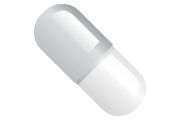Tacrolimus for prevention of transplant rejection
This leaflet is for parents and carers about how to use this medicine in children. Our information may differ from that provided by the manufacturers, because their information usually relates to adults. Read this leaflet carefully. Keep it somewhere safe so that you can read it again.
Do not stop giving Tacrolimus, as your child’s transplanted organ may be rejected and they may become seriously ill.
Make sure you always have the same brand of Tacrolimus
Name of medicine
Tacrolimus
Brand names: Prograf, Adoport, Modigraf granules
Why is it important for my child to take Tacrolimus?
When a child has a heart, liver or kidney transplant, the immune system recognises the transplanted organ as “foreign”. Tacrolimus is an immunosuppressant – it stops the immune system from attacking the transplanted organ. It is vital that your child takes this medicine as prescribed to prevent the organ from being rejected.
What is Tacrolimus available as?
Capsules
- Adoport: 0.5 mg, 0.75 mg, 1 mg, 2 mg, 5 mg
- Prograf: 0.5 mg, 0.75 mg
- These may contain small amounts of lactose
Modigraf granules: 0.2 mg and 1 mg sachets
When should I give Tacrolimus
Tacrolimus is usually given twice each day, once in the morning and once in the evening. Ideally, these times are 10–12 hours apart, for example some time between 7 and 8 am, and between 7 and 8 pm. Give the medicine at about the same times each day so that this becomes part of your child’s daily routine, which will help you to remember.
Give the medicine at about the same time(s) each day so that this becomes part of your child’s daily routine, which will help you to remember.
If your child is having blood taken to measure the level of tacrolimus, make sure their evening dose is 12–14 hours before the time of the blood test.
How much should I give?
Your doctor will work out the amount of Tacrolimus (the dose) that is right for your child. The dose will be shown on the medicine label.
It is important that you follow your doctor’s instructions about how much to give.
How should I give Tacrolimus?

Capsules
Capsules should be swallowed whole with a drink of water, squash or milk. Your child should not chew these capsules.

Granules
- Do not use plastic cups or spoons, as the granules will stick to them.
- Cut open the correct number of sachets with scissors, one at a time, and tip the contents into a small glass or cup. Tap the sachet to get the granules out but you do not need to scrape them out.
- Add at least 0.4 mL of water for each 0.2 mg sachet or 2 mL for each 1 mg sachet. You can measure these amounts with an oral syringe.
- Stir the mixture until the powder is dissolved.
- Your child should drink all the mixture straight away or you can give it to them using a spoon or oral syringe.
- Add the same amount of water as used above to the glass or cup and swirl it around. Your child should drink all the mixture straight away. This is to make sure they get the whole dose.
- Do not use more than 50 mL of water for the two steps.
Your doctor will work out the amount of Tacrolimus
(the dose) that is right for your child. The dose will be shown
on the medicine label.
It is important that you follow your doctor’s instructions about how much to give.
When should the medicine start working?
The medicine starts to work as soon as your child starts taking it. You will not see any difference in your child. However, they must continue to take it as your doctor has told you to, to prevent the transplanted organ from being rejected.
What if my child is sick (vomits)?
- If your child is sick less than 30 minutes after having a dose of Tacrolimus, give them the same dose again.
- If your child is sick more than 30 minutes after having a dose of Tacrolimus, do not give them another dose. Wait until the next normal dose.
If your child is sick again, seek advice from your family doctor, nurse, pharmacist, or hospital. They will decide what to do based on your child’s condition and the specific medicine involved.
What if I forget to give it?
If you remember up to 6 hours after you should have given a dose, give your child the missed dose. For example, if you usually give a dose at about 7 am, you can give the missed dose at any time up to 1 pm. If you remember after that time, do not give the missed dose. Wait until the next normal dose.
Never give a double dose of Tacrolimus.
Are there any possible side effects?
We use medicines to make our children better, but sometimes they have other effects that we don’t want (side effects).
Side effects you must do something about
If your child has pain when passing urine (doing a wee) or produces less urine than usual, contact your doctor, transplant specialist or nurse straight away, as your child may have a kidney problem.
Other side-effects you need to know about
Your child may get diarrhoea, indigestion, feel sick or be sick (vomit). These effects usually wear off when your child’s body is used to the medicine. If they are still a problem after a week, contact your doctor, transplant specialist or nurse.
Your child may get dizzy, seem confused, anxious or depressed and may have difficult sleeping.
They may have blurred (fuzzy) vision or hearing problems.
They may get muscle cramps and pains in the joints.
They may lose some hair.
There may sometimes be other side effects that are not listed above. If you notice anything unusual and are concerned, contact your doctor. You can report any suspected side effects to a UK safety scheme at mhra.gov.uk/yellowcard
More information on side-effects can be found in a leaflet on our website.
Can other medicines be given at the same time as Tacrolimus?
- You can give your child medicines that contain paracetamol, unless your doctor has told you not to.
You should not give your child medicines that contain ibuprofen.
Tacrolimus should not be taken with some common drugs that you get on prescription. It is important to tell your doctor and pharmacist that your child is taking Tacrolimus and check before giving any other medicines. This includes herbal or complementary medicines.
Check with your doctor or pharmacist before giving any other medicines to your child. This includes herbal and complementary medicines.
Is there anything else I need to know about this medicine?
- Your child will be more prone to infection because tacrolimus suppresses the immune system. If your child has a fever (temperature above 38°C) or seems unwell, contact your doctor straight away.
- Make sure your child must always have the same brand of tacrolimus. Keep a note of which brand this is, and check that you are given the right one each time you get a new supply.
- Your child should not eat grapefruit or drink grapefruit juice, as this may increase the level of tacrolimus in the body, which could be harmful.
- Tacrolimus may increase the risk of skin cancer. Your child should avoid strong sunlight. Protect their skin with clothing and high-factor sunscreen (at least SPF 50).
General advice about medicines
- Only give this medicine to your child. Never give it to anyone else, even if their condition appears to be the same, as this could do harm.
- Make sure that you always have enough medicine. Order a new prescription at least 2 weeks before you will run out.
- Make sure that the medicines you have at home have not reached the ‘use by’ date on the packaging. Give old medicines to your pharmacist to dispose of.
If you think someone else may have taken the medicine by accident, contact your doctor straight away.
Where should I keep this medicine?
- Keep the medicine in a cupboard, away from heat and direct sunlight.
- Keep the medicine in the container it came in.
- Make sure that children cannot see or reach the medicine.
Who to contact for more information?
Your child’s doctor, pharmacist or nurse will be able to give you more information about Tacrolimus and about other medicines used to prevent transplant rejection.
England: NHS 111
Tel 111
www.nhs.ukScotland: NHS 24
Tel 111
www.nhs24.scotNorthern Ireland: NI Direct
Wales: NHS 111 Wales
Tel 111
www.111.wales.nhs.ukKidney Care UK
01420 541424
www.kidneycareuk.org/Copyright disclaimer
Version [3]. © NPPG, RCPCH and WellChild, all rights reserved. Review by December 2027.
The primary source for the information in this leaflet is the British National Formulary for Children. For details on any other sources used for this leaflet, please contact us through our website, www.medicinesforchildren.org.uk.
We take great care to make sure that the information in this leaflet is correct and up-to-date. However, medicines can be used in different ways for different patients. It is important that you ask the advice of your doctor or pharmacist if you are not sure about something. This leaflet is about the use of these medicines in the UK, and may not apply to other countries. The Royal College of Paediatrics and Child Health (RCPCH), the Neonatal and Paediatric Pharmacists Group (NPPG), WellChild and the contributors and editors cannot be held responsible for the accuracy of information, omissions of information, or any actions that may be taken as a consequence of reading this leaflet.
